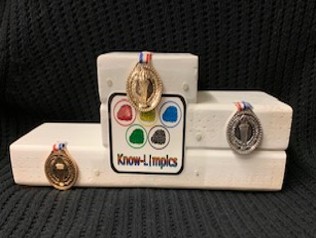Abstract
This unusual and engaging class activity uses a mock athletic event to introduce and examine the four levels of measurement in research methods and statistics courses. Using inexpensive and readily available items such as common types of fruit and disposable beverage cups, student volunteers “compete” in the Fruit Cup event and their classmates cheer...
Download this resource to see full details. Download this resource to see full details.
Details
- Subject Area(s):
- Quantitative Methodology, Research Methods, Statistics
- Resource Type(s):
- Class Activity
- Class Level(s):
- College 100, College 200, College 300
- Class Size(s):
- Medium, Small
Usage Notes
Level of measurement is a key concept in the mastery of research methods and statistics. This activity features student volunteers “competing” in a mock “Know-Limpic” athletic event, the “Fruit Cup,” to introduce and illustrate the nominal, ordinal, interval and ratio levels of measurement.
The activity begins with an...
Download this resource to see full details. Download this resource to see full details.
Learning Goals and Assessments
Learning Goal(s):
- Students should be able to summarize the level of measurement concept and its role in research methods and data analysis.
- Students should be able to explain the differences between nominal, ordinal, interval and ratio levels of measurement.
- Students should be able to identify the level of measurement of various measures inside and outside social science.
- Students should be able to provide original examples of measurement at the nominal, ordinal and ratio levels of measurement.
- Students should be able to choose an appropriate level of measurement, given a particular research need or plan.
Goal Assessment(s):
- Using a One-Minute Paper classroom assessment technique or an essay question on an exam, students can be asked to summarize the level of measurement concept and its role in research methods and data analysis.
- Using essay test questions, students can be asked to explain differences between the nominal, ordinal, interval and ratio levels of measurement.
- Using a student response system (e.g., “clickers”), a show of hands, or fill-in-the-blank, multiple-choice or labeling test questions, students can be asked to identify the level of measurement of various measures.
- Using essay or short answer test questions or a classroom assessment technique such as a one-minute paper, or by asking for examples in class, students can be asked to develop original examples of the nominal, ordinal and ratio levels of measurement.
- Using a student response system (e.g., “clickers”), show of hands, short answer, essay or multiple-choice test questions, students can be given a description of a research goal, and asked which level of measurement or measure would be most appropriate.
When using resources from TRAILS, please include a clear and legible citation.


